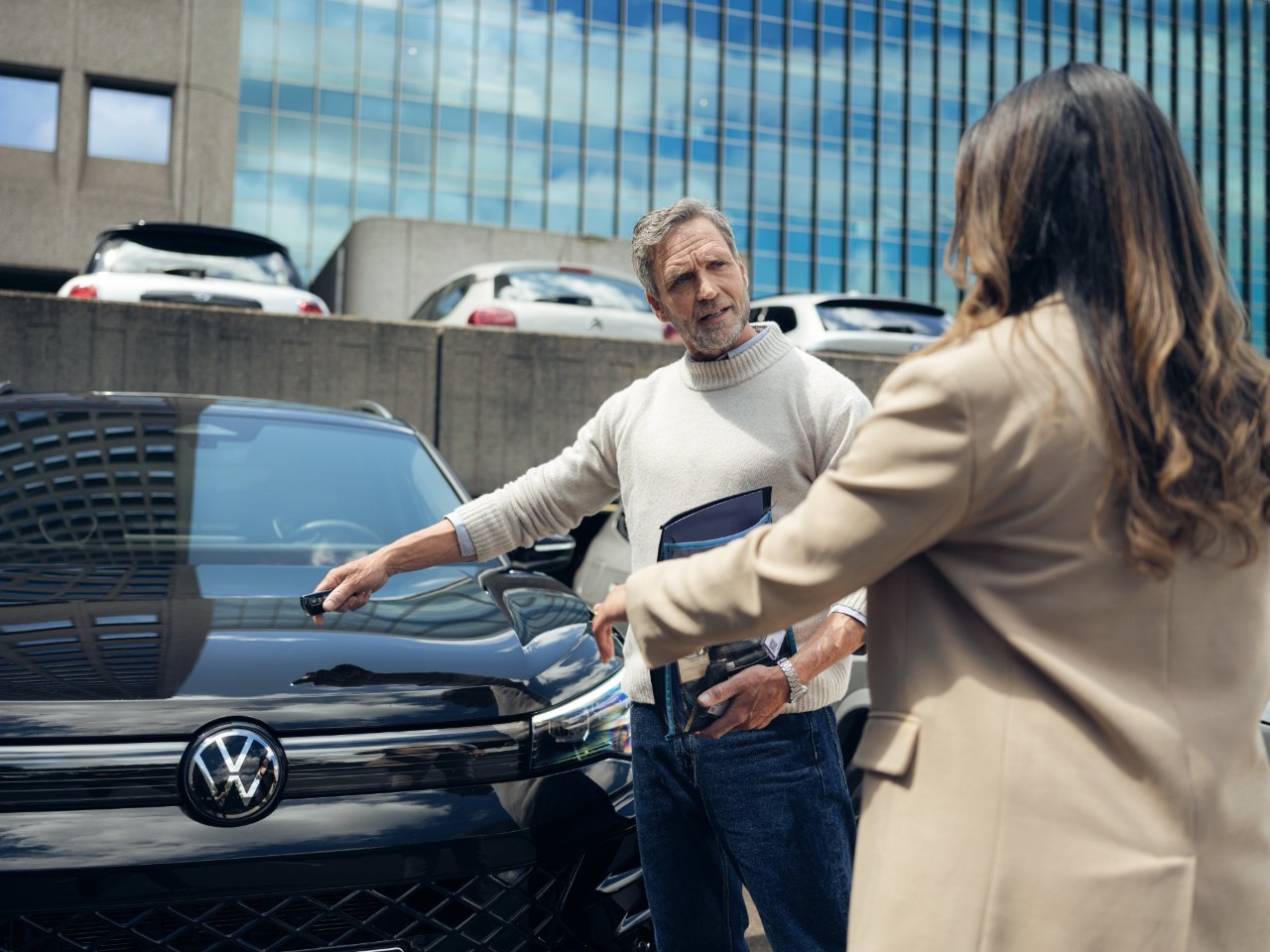If you’re thinking about getting into an electric vehicle (EV) for the first time, or maybe you’re a seasoned pro already - there’s a chance you’ll have some unanswered questions. Of course, it’s important to have all the information before deciding to commit – and that’s where we come in.
In this guide, we provide answers to a range of common myths and questions about electric cars. Read our mythbusting guide to put your mind at ease. And discover the sustainable truth about EVs.
Mythbusting - Part One

Range anxiety is still one of the biggest issues that prevents people from making the switch to EVs. But here’s the thing: the average car journey in England is under 100 miles, and the average range of an EV is more than 200 miles – meaning that most of your day-to-day journeys will be covered.
When planning longer journeys, it’s easier than ever to incorporate a quick charge into your pit stop along with a comfort break and a bite to eat. That’s because, these days, most service stations offer a number of rapid and ultra-rapid charge points. So, even if you have a lengthy commute or are planning on using your EV for cross-country drives, you’ll be covered. All you need to do is choose an EV with the right capacity to suit your lifestyle.
It’s true that a home charger is the most convenient option, but you don’t have to have one. And not having one won’t stop you from owning an EV. More and more charge points are popping up in lots of accessible places, such as supermarkets, hotels, garden centres and even on street lampposts. In fact, the government is also planning to increase the number of public charging points in the UK to 300,000, with 6,000 on motorways and major A roads by 2035. This means you’ll never be too far from a public charging point.
You may also find that your employer is considering charge points at your workplace. With over 2,000 new charge points being added to the network every month, charging in the UK is becoming easier than ever.
That’s not necessarily true. Many EVs are known for their quick acceleration and instant torque, which can make them faster than traditional combustion engine vehicles.
As EVs don’t have gears, their 0-60mph pace is superior to regular cars. Though it will feel extremely smooth, they reach peak torque as soon as you step on the accelerator (unlike internal combustion engines that may require time to build up power).
Technically, most EVs do take longer to charge than filling up a tank of petrol or diesel. But a current EV can take as little as 10 minutes or up to 12 hours to fully charge – it all depends on the charge point you’re using and the size of your vehicle’s battery.
Many public charge points will take you from 0% to 80% in under three hours. Though it’s unlikely you’ll ever be charging from 0% when out and about, you’re likely to only need a quick top up while you grab a coffee or something to eat.
Remember, the majority of charging you do is likely to be done whilst your asleep at home, or busy at work. For many, it’s unlikely that having to charge at a motorway service station becomes the norm, meaning you’ll have the freedom to get on with other things while your battery is getting it’s fix. Also, battery technology is improving all the time so there will be faster charging speeds available in the not too distant future, for sure.
With 90% fewer moving parts, EVs generally have lower maintenance costs compared to combustion engine cars. They don’t need oil changes, spark plug replacements or complex transmission systems, all of which can be costly. There’s also no hard evidence that tyres wear quicker. Regenerative braking reduces wear and extends brake life, meaning that brake pad repairs or replacements are less frequent too.
Of course, EVs will still require occasional maintenance like changing windshield wipers, but that’s standard for all vehicles. It will vary depending on the make and model, as well as the region and service provider, but generally EVs tend to cost less to maintain. They are also less likely to break down than petrol or diesel cars. Again, that’s down to fewer moving parts meaning there’s not as much chance for things to go wrong.
That’s not true – they can tow or be towed. But like all vehicles, EVs must be “type approved” to legally tow, providing you don’t exceed the tow capacity. Make sure you check the specifications before you purchase your EV or set off on your journey.
When being towed, we recommend you place your EV on a flatbed truck. That’s because EVs don’t have a neutral gear, so they can’t be lifted and towed on two wheels in the usual way for a significant amount of time.
If your EV breaks down and is in immediate danger (in a live traffic lane, for example), it can be towed slowly over a short distance to a safe location, where you can wait for further assistance.
Mythbusting - Part Two
In part two, we’ll be busting myths around the role EVs can play in the wider world. Read on to discover the truth about charging, maintenance and safety.

If everyone had an electric vehicle and charged at the same time of night, surely that’d be too much for the grid to handle?
Well, yes. In that instance, it could be. But the fact is, not everyone charges at the same time. Even so, a lot of research and planning is being done to ensure the grid is never overstretched by EVs. By the time the government’s policy banning new petrol and diesel cars comes into effect in 2035, the UK is aiming to reach 100% zero-carbon energy. In short, measures are already in place to support a widescale move to electric – and EVs are designed to make this possible. Charging at a lower speed and capping the charge at 80% is not only easier for the grid to handle, it’s also better for the vehicle’s battery. That’s a win-win.
On top of this, V2G (Vehicle to Grid) technology allows drivers to support the grid by pushing energy from their batteries back into the grid at times of high demand and recharge themselves when the levels return to normal. Methods such as this, are in place to alleviate the pressure if required.
With different chargers requiring a variety of apps or payment methods, they have gained a reputation for being complex. But things are changing.
Many charge point operators are working to ensure you don’t need to download an app to access their service. Some use a QR code on the charger, and new government regulations mean that soon, public chargers will be required to allow you to simply tap your contactless card and start charging.
Plus, many providers have signed up to Zap-Pay, a single-app payment system that uses a credit or debit card to pay for charging – and, some manufacturers have begun to offer their own all-encompassing apps with similar capabilities, such as My BMW. These end the hassle of needing multiple apps to locate charging points, making it much easier to plan a journey or find a place to charge on-the-go. It is worth noting though, that many charge point operators (CPOs) are offering benefits for app users, including discounted rates. If you use a certain type of charger regularly, downloading their app could be worth your time.
Plus, now that essentially every EV is using Type 2 cables, plugging in is simple. No need for adapters. For more information on charging, check out our in-depth charging guide.
There will always be a sense of frustration if your chosen charge point isn’t operating. But this is also true of petrol stations, which can close for hours at a time in order to restock fuel. Services like Zapmap can help you find working chargers. Broken chargers can be reported, so other people don’t use them, and repair teams can fix the issue.
While there will always be some chargers that aren’t in operation, either via damage or a loss of connection, the government is pushing for a 99% operational rate across the network. While this could still mean hundreds of chargers across the nation are inoperable, chances are, you’ll find them in good working order.
Plus, even if one is broken in the bank you use, the others should be working. And since most people are in-and-out between 30 minutes to an hour, there’s no need to worry about waiting in an endless queue and you’ll usually only need to wait up to 10 mins to get connected.
Mythbusting - Part Three

There’s a myth that EVs actually produce the same level of emissions as petrol and diesel cars. But this isn’t true at all. You’ll be relieved to know that EVs really are more environmentally friendly than both petrol and diesel cars, in terms of direct emissions and environmental impact. Here are a few reasons why:
Driving an EV will reduce your exhaust pipe emissions.
Naturally, pure battery EVs produce zero emissions. But, even if you drive a plug-in hybrid that uses both battery and petrol/diesel power, you’ll use up less fossil fuel than a pure combustion engine vehicle.
EVs charge solely from the electrical grid, so produce fewer emissions.
And, as the grid becomes more sustainable through the use of renewable energy sources, the carbon footprint for EVs and the grid itself will become significantly lower.
EVs are low-emission for life.
EVs produce less dioxide and pollution across the entire driving lifecycle than their petrol/diesel equivalents.
EVs offer a typical payback of around 6-24 months.
How long it takes for your new electric vehicle to have a positive impact on the environment depends, among other things, on your mileage and the level of fossil fuels being used to power the electrical grid. However, you can expect to do your bit for planet earth in about 6-24 months.
Did you know there’s actually more cobalt in your mobile phone than in many EV batteries? In addition, the refining process for petroleum uses cobalt too.
This aside, the use of raw materials is an issue that’s already being addressed. Usage has already been dramatically reduced, with many batteries now being made from more easily accessible materials. Several global initiatives are also now in place to improve mining labour practices for EV batteries.
Considerable investments have been made to mine and refine locally, with the aim of reducing the overall impact and creating local business opportunities. Interested in learning more about sustainable EV battery materials? Find out about Cornish Lithium here.
While hydrogen mobility solutions may be another option in the future, it’s currently far more energy-intensive to produce. What’s more, as an energy source, it’s far less efficient too.
Whilst hydrogen is an exciting concept, it’s currently far from a practical reality. However, it has significant potential, and building blocks are in place to explore just what’s possible.
Talk to our experts

